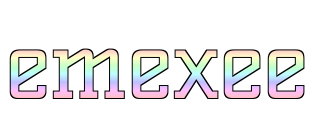Table of Content:
1. Introduction to AI Art
2. Discovering the Basics of AI Artificial Intelligence
3. The Intersection of AI Art and Artificial Intelligence
4. Exploring the Evolution of AI Art
5. AI Art Techniques and Tools
6. How AI Generates Art: An In-Depth Look
7. Ethical Considerations in AI Art
8. Impact of AI Art on the Creative Industry
9. AI Art and the Future of Creativity
10. FAQs
1. Introduction to AI Art
we will provide an overview of AI Art, its definition, and its importance in the modern art world. We will explore how artificial intelligence has revolutionized the artistic process and open new possibilities for creativity.
2. Discovering the Basics of AI Artificial Intelligence
To Truly understand of AI art, it is essential to have a solid understanding of the underlying principles of artificial intelligence. This section will explore of basics of AI, including machine learning, neural networks, and deep learning algorithms.
3. The Intersection of AI Art and Artificial Intelligence
Here, we will explore the fascinating intersection of AI arts. We will discuss how artists have accepted of AI as a tool for creation, collaboration, and exploration, blurring the boundaries between human and machine-generated art.
4. Exploring the Evolution of AI Art
This section will take a historical perspective on the evolution of AI art. We will trace its origins, from early experiments to contemporary masterpieces, highlighting key milestones and notable artists who have contributed to its development.
5. AI Art Techniques and Tools
In this section, we will delve into various techniques and tools used in AI art creation. From style transfer algorithms to generative adversarial networks (GANs), we will explore the cutting-edge technologies that enable artists to harness the power of AI.
6. How AI Generates Art: An In-Depth Look
Here, we will take a look into the process of how AI generates art. We will discuss the underlying algorithms, training datasets, and the role of human input in guiding and shaping the artistic output of AI systems.
7. Ethical Considerations in AI Art
As AI art becomes more prevalent, ethical considerations come to the forefront. This section will examine the ethical implications of AI art, including issues of authorship, copyright, bias, and the impact on traditional artistic practices.
8. Impact of AI Art on the Creative Industry
The rise of AI art has had a profound impact on the creative industry. In this section, we will explore of AI has influenced various sectors, such as fine arts, design, advertising, and entertainment, revolutionizing the way art is produced, consumed, and valued.
9. AI Art and the Future of Creativity
Looking ahead, AI art promises to reshape the future of creativity. This section will discuss the potential implications, possibilities, and challenges that lie ahead as AI continues to advance and permeate the artistic domain.
10. FAQs
Here are some frequently asked questions about creating AI art:
Q1: What is AI art?**
AI art refers to artwork generated and created with the assistance of artificial intelligence systems, such as machine learning algorithms and neural networks.
Q2: How does AI create art? **
AI creates art by analyzing vast amounts of data and learning patterns from existing artwork. It can generate new images, mimic various artistic styles, or even.
Collaborate with human artists.
Q3: Can AI art be considered "authentic" art? **
The definition of authenticity in art is subjective. While AI art may lack human intentionality, it opens up new possibilities for artistic expression and challenges traditional notions of authorship and creativity.
Q4: Are there any ethical concerns surrounding AI art? **
Yes, there are ethical concerns surrounding AI art, such as issues of copyright, ownership, and the potential reinforcement of biases present in training datasets.
Q5: How can AI art benefit the creative industry? **
AI art has the interest to enhance creativity, inspire new artistic directions, automate repetitive tasks, and provide new tools for artists to explore and experiment with.
Q6: Will AI replace human artists? **
AI is unlikely to replace human artists completely. Instead, it is more likely to augment and collaborate with human creativity, offering new avenues for artistic expression.
Q7: Where can I see examples of AI art? **
There are numerous online platforms, galleries, and exhibitions dedicated to showcasing AI art. Websites like Art AI Gallery and AI Art Exchange are great places to explore and discover AI-generated artworks.
Q8: Can I create AI art without programming skills? **
Yes, there are user-friendly AI art tools and software available that do not require extensive programming knowledge. These tools provide intuitive interfaces for users to create AI-generated art.
Q9: How can I get started with creating AI art? **
To get started with creating AI art, you can begin by exploring beginner-friendly AI art platforms, attending workshops or tutorials, and experimenting with different techniques and styles.
Q10: What does the future hold for AI art? **
The future of AI art is full of exciting possibilities. As AI continues to advance, we can expect more sophisticated and diverse AI art forms, further blurring the line between human and machine creativity.
Conclusion
In conclusion, AI art has emerged as a groundbreaking field that merges the realms of artificial intelligence and artistic expression. With its ability to generate unique, thought-provoking artworks, AI is revolutionizing the creative industry.
However, as AI art evolves, it is crucial to address ethical considerations and ensure that human involvement remains integral to the artistic process.



0 Comments